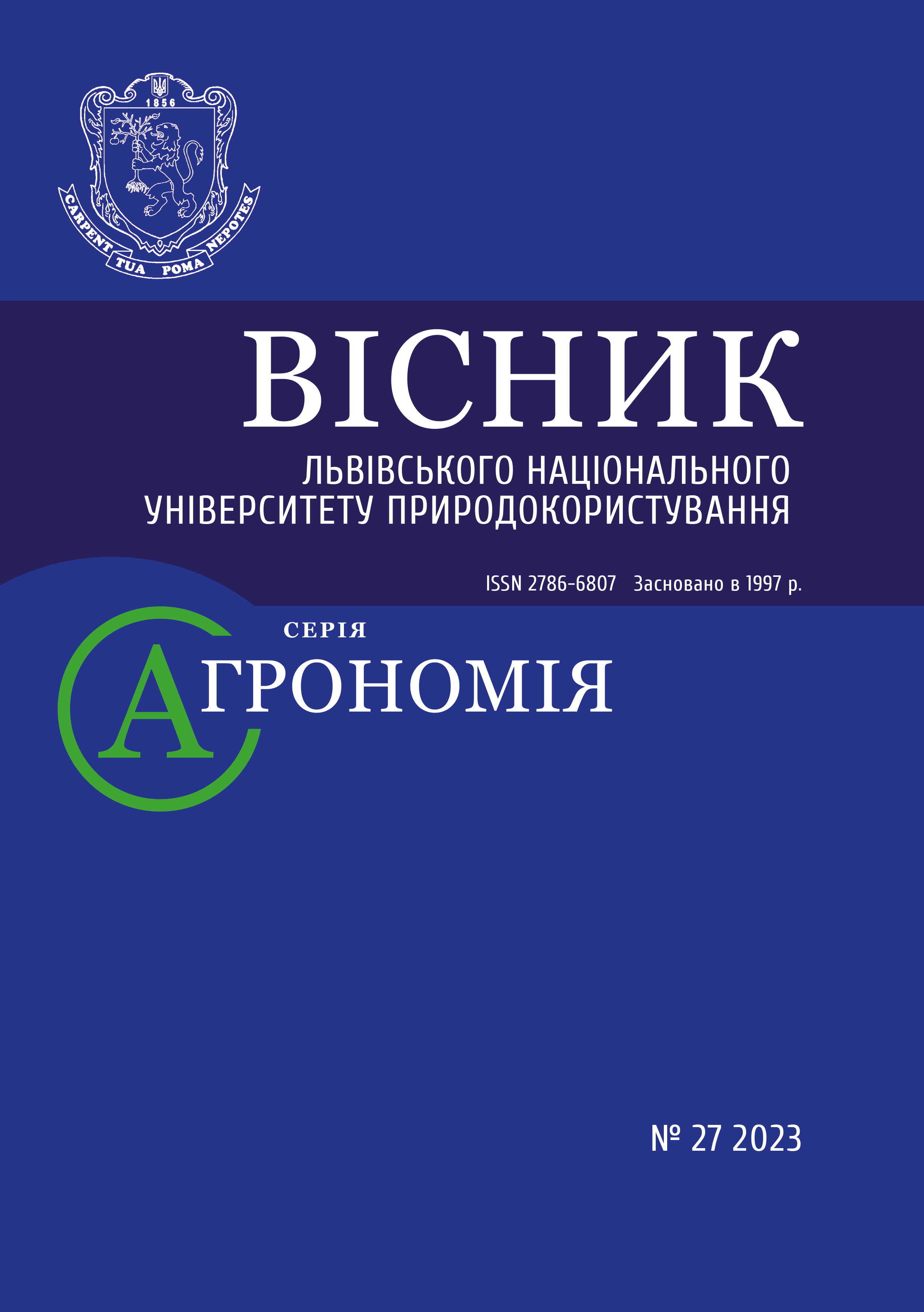GLOBAL WARMING AND SMALL CYCLE: RISKS AND PROSPECTS
DOI:
https://doi.org/10.31734/agronomy2023.27.058Keywords:
climate change, soil, landscape, vegetation, water cycleAbstract
Climate change is altering our understanding of ourselves, our society, the relationships between socio-economic and biophysical systems, and humanity's place on Earth. It is clear that the Earth is warming, but the scientific consensus for half a century has ignored the root cause of this threatening phenomenon, so the response has been ineffective and has not led to a consolidation of efforts. It is noted that the main reasons for the impact on the climate in the agro sector are the clearing of land for agriculture, the loss of year-round vegetation covering the soil, the reduction of forests, which expose the bare soil to solar radiation, creating tangible heat. The cooling effect of evaporation is limited or stopped by vegetation. This significantly changes formation and movement of moisture, stops rain from reaching deep into dry areas. In the article, the authors define the most important directions and some actions to solve the problem of bare soil surfaces.
The earth still behaves as if it is trying to preserve the most favorable environment for all living things. It follows that the safest and most sustainable land use should imitate natural vegetation. Farmers and other land users should avoid exposing bare soil to direct sunlight. For this purpose, it is proposed to minimize tillage (no tillage) leaving the plow; to implement various crop rotations, preferably with perennial crops; to form a motley, diverse landscape that promotes a small water cycle in agroecosystems. The present research identifies only some of the processes through which a bare or non-bare landscape affects weather and climate. The work confirms that the impact of soil stripping from vegetation on atmospheric processes should be taken into account in the policy of regional land management in agro landscapes around the world, and even where significant land clearing for agricultural purposes is impossible.
References
150 years of Vernadsky, the Noösphere: vol 2. / eds J. A. Ross and M. K. Rouillard. Scotts Valley CA: CreateSpace, 2014. 84 p.
Adegoke J. O., Pielke R. A., Carleton A. M. Observational and modelling studies of the impacts of agriculture-related land use change on planetary boundary layer processes in the Central U.S. Agricultural and Forest Meteorology. 2007. No 142 (2–4). Р. 203–215.
Bellamy D. Where have all the trees gone? Bellamy on Botany. London: BBC, 1972. Р. 48–57.
Climate change and land: an IPCC special report / Shukla P. R. and others. Geneva: IPCC, 2019. 846 р.
Climate variability and change in south west Western Australia / report of Indian Ocean Clim. Initiative, East Perth: IOCI Panel, 2002. 43 p.
Crews T. E., Carton W., Olsson L. Is the future of agriculture perennial? Imperatives and opportunities to reinvent agriculture by shifting from annual monocultures to perennial polycultures. Global Sustainability. 2018. No 1 (11). Р. 1–18.
Dent D. L., Boincean B. P., Bai Zh. An investable proposal to transform the steppe. Soils under stress. More work for soil science in Ukraine / eds. Y. Dmytruk & D. L. Dent. Cham : Springer, 2021. Р. 27–34.
Huang X., Lyons T. J., Smith R. C. G. The meteorological impact of replacing native perennial vegetation with annual agricultural species. Hydrol. Processes. 1995. No 9. P. 645–654. doi:10.1002/hyp.3360090512.
Kala J., Lyons T. J., Nair U. S. Numeral simulations of the impact of land-cover change on cold fronts in south-west Western Australia. Boundary Layer Meteorol. 2011. No 138. P. 121–138. doi:10.1007/s10546-010-9547-3.
Keeling C. D. The concentration and isotopic abundance of carbon dioxide in the atmosphere: Tellus. 1960. No 12 (2). Р. 200–203.
Lovelock J. E. Gaia. The practical science of planetary medicine. London: Gaia Books, 1991. 192 p.
Lovelock J. E. Gaia: a new look at life on the Earth. Oxford: OUP, 1979. 176 p.
Lyons T., Smith R., Xinmei H. The impact of clearing for agriculture on the surface energy budget. International Journal of Climatology. 1996. No 16. Р. 551–558.
Lyons T. J. Clouds prefer native vegetation, Meteorol. Atmos. Phys. 2002. No 80. P. 131–140. doi:10.1007/s007030200020.
Mulvey P., Mulvey F. Ground breaking. Soil security and climate change. Melbourne : Kerr Publishing, 2021. 190 p.
Nair U. S., Wu J., Kala J. and others. The role of land use change on the development and evolution of the west coast trough, convective clouds and precipitation in southwest Australia. Journal of Geophysical Research. 2011. No 116. doi: 10.1029/2010JDOI014950.
Narisma, G. T., Pitman A. J. The impact of 200 years of land cover change on the Australian near-surface climate. J. Hydrometeorol. 2003. No 4. P. 424–436. doi:10.1175/1525-7541(2003)4<424:TIOYOL>2.0.CO;2.
Pielke R. A., Adegoke J. O., Chase T. N. and others. A new paradigm for assessing the role of agriculture in the climate system and in climate change. Agricultural and Forest Meteorology. 2007. No 142. Р. 234–254.
Pitman A. J., Narisma G. T., Pielke R., Holbrook N. J. The impact of land cover change on the climate of southwest Western Australia. J. Geophys. Res. 2004. No 109. D18109. doi:10.1029/2003JD004347.
Public papers of the Presidents of the United States: James E. Carter, 1977.
Public papers of the Presidents of the United States: Lyndon B. Johnson, 1965.
Ray D. K., Nair U. S., Welch R. M., Han Q., Zeng J., Su W., Kikuchi T., Lyons T. J. Effects of land use in southwest Australia: 1. Observations of cumulus cloudiness and energy fluxes. J. Geophys. Res. 2003. 108 (D14). P. 4414. doi:10.1029/2002JD002654.
Restoring the quality of our environment / report of the Environmental Pollution Panel President’s Scientific Advisory Committee. Washington DC: The White House, 1965. 293 р.


